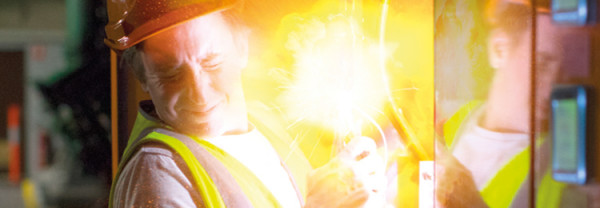How to work safely around electricity?
Guidance to a minimum set of procedures, safety requirements and recommendations for a safe working environment that all Electrical Workers must know.
- Safe Work
Life is fragile tragic real life examples of electrocutions
Life is fragile but even more so for electrical workers due to the nature of the work, they carry out and the inherent dangers of working with electricity.
Devastating outcomes can result from seemingly ordinary everyday tasks that could have been mitigated or prevented by applying appropriate risk elimination and control strategies. These should include steps/processes to prevent work on live equipment/fittings and eliminating or mitigating other electrical/environmental risks associated with the work.
This media release and Coroner's report tragically and sadly recount electrocutions involving apprentices working in ceiling spaces.
Energysafe Victoria - Media release [PDF, 55 KB](external link)
Queensland Courts - Coroners report [PDF, 805 KB](external link)
Risks of working in cramped areas such ceiling spaces
Cramped and restrictive work areas such as ceiling spaces, basements or similar pose a higher level of risk for a number of reasons including that they usually involve working within a confined space. Any person entering these areas must take precautions to minimise the risks associated with electrical cables, equipment and the limited ability for physical movement.
Electrical hazards in these areas can include:
- exposed live electrical conductor/wiring
- electrical connections where the condition of wiring has deteriorated, often associated with older buildings
- unused wiring left in the ceiling or basement that could be still connected to the switchboard
- main neutral faults, which may cause current to flow in the earth conductors and other metallic parts such as gas or water pipes
- non electrical work on items such as air conditioning, heating ducts, thermal insulation that may have detrimentally affected the electrical installation
- illegal or sub-standard electrical work
Responsibilities and how to work safely
As a licensed electrical worker you have you have a legal responsibility under Regulation 100 of the Electricity Safety Regulations 2010(external link) to work safety at all times. This responsibility also extends to the supervision of apprentices.
Regulation 100 makes it mandatory to comply with standard AS/NZS 4836 (Safe working on or near low-voltage electrical installations and equipment.
This standard outlines procedures of safe work, organization and performance on or near low-voltage electrical equipment.
It provides a minimum set of procedures, safety requirements and recommendations for a safe working environment. All Electrical Workers must be familiar with and comply with this standard.
AS/NZS 4836 is freely available to all licenced electrical workers with a RealMe login through the EWRB website homepage.
Don’t Work Live principle

This image is attributed to: Energy Safe Victoria
Never work live on switchboards, fittings, conductors or equipment. Always ensure you have followed the correct procedures to identify isolate /lock off and test before starting work.
One of the guiding principles in AS/NZS 4836 is that work on or near live equipment should never be carried live unless it is
- In the interests of safety and
- The risk of harm would be greater than working de-energized.
These and other requirements set the bar extremely high for carrying out any work on live fittings or equipment.
Warning: working on and around energised conductors and fittings can never be justified as being as safe as working de-energized
Safe work practices to dos and don’ts
Never:
- Try to save time by eliminating procedures and risk assessment
- Work on energised switchboards, circuits, fittings
- Neglect isolating and proving all equipment and control circuits are safely isolated.
- Feel obligated (even if pressured) for whatever reason to carry out work live
- Get complacent when working around electricity
Always:
- Plan and discuss the job
- Carry out a risk assessment and have safe working plan in place
- Consider the risks with working in cramped areas like ceiling spaces
- Know where isolation points are located for emergency reasons
- Disconnect the electrical supply before starting work
- Verify and test appropriate areas are effectively isolated
- Leave incomplete work effectively isolated (never just switched “off”) with warning notices
- Test completed work for compliance with the wiring rules (AS/NZS 3000)

